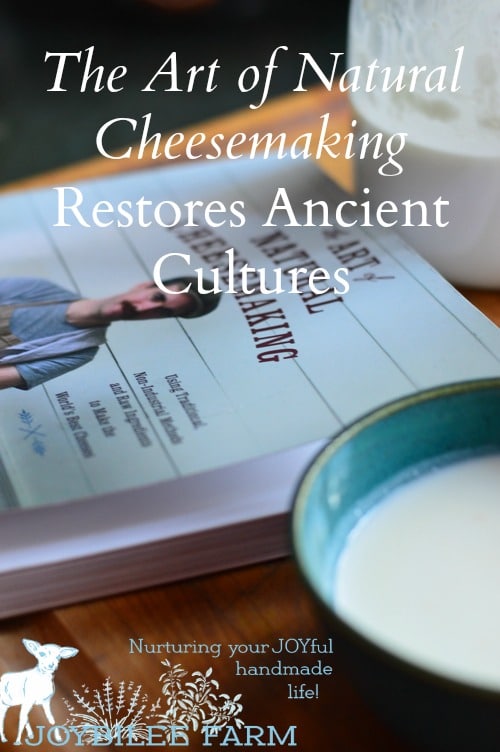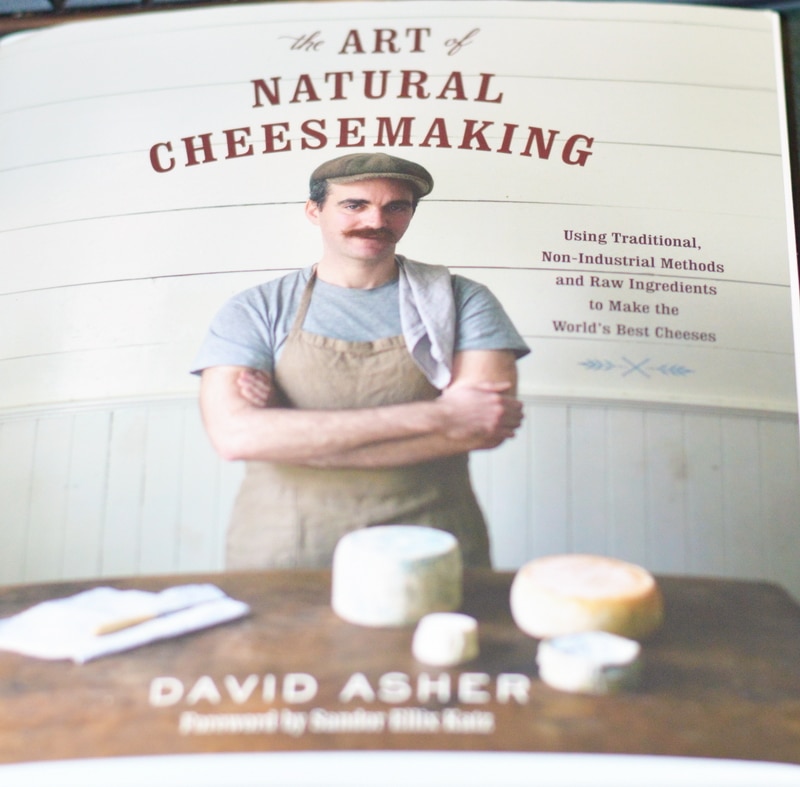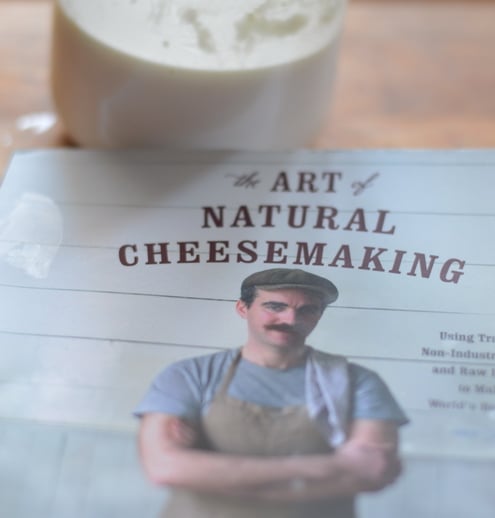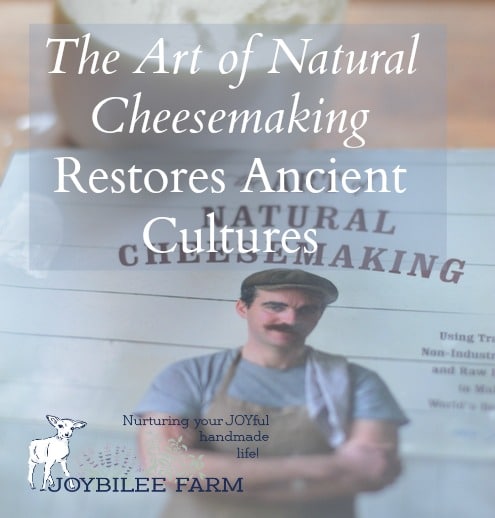The Art of Natural Cheesemaking Restores the ancient way of cheesemaking
A Review of The Art of Natural Cheesemaking, Using Traditional, Non-industrial Methods and Raw Ingredients to Make the World’s Best Cheeses by David Asher (Chelsea Green Publishing: White River Junction, Vermont) 2015.
5 stars
If you have dairy animals or a source of milk and you want to make cheese, you need this book. David Asher, in The Art of Natural Cheesemaking, saved me $150 a year. I wish I had this book when I first started making cheese 25 years ago. When I started making cheese, Carla Emery’s book was my only guide and it said you can’t make cheese at home. I tried anyway.
In 2003, The Cheesemaker’s Manual was published by Glengarry Cheese Supply. I preordered the book in 2001. It took 2 years to arrive in my mail box. It led the way to taking industrial-size cheese batches and cutting down the recipes so they could be made in a home dairy with just 2 to 8 gallons of milk. This is the book I’ve used for cheesemaking for the last 13 years. Every recipe had a specific cheese culture and ripening agent that needed to be purchased. There were a few successes and a few failures.
Each cheese making culture needed to be purchased from a dairy supply. Each culture is used by the ½ teaspoon to inoculate a 2 to 3 gallon bucket of milk. With just three cheese cultures, a mesophilic culture for room temperature fermentation for feta, cheddar, and farmhouse cheeses, a thermophilic culture for warm fermentation for mozzarella, and a thermophilic culture specifically for yoghurt, I can make all the cheese I need in my farmhouse kitchen, as well as having fresh yoghurt every day.
At the same time I have a jar of milk kefir fermenting on my kitchen counter. I take a few tablespoons of kefir every day as a supplement. The kefir culture was a gift from a neighbor. I feed it fresh raw goat’s milk every day or two and it just keeps replenishing itself. But honestly, I never connected the jar of kefir on my kitchen counter with my weekly cheese making.
I buy these three bacterial cultures and a 1 litre bottle of rennet, every year from my supplier in Ontario. These cheese cultures cost me about $100, plus $45 for the rennet, and about $15 shipping, annually. But hey, there aren’t many cheese dairy suppliers in Canada. And you can’t make cheese without culture and rennet, can you?
However, after reading Asher’s book, I have a whole new appreciation for kefir, and a bit of alarm for the cheese cultures I’ve been purchasing year after year. You see these cheese cultures are a combination of just one to four laboratory isolated cultures. My mesophilic culture, for instance, “Mesophillic Aroma Type B,” contains Lactococcus lactis subsp cremoris, Lactococcus lactis subsp lactis, Lactococcus lactis subsp diacetylactis, and Leuconostoc mesenteroides subsp mesenteroides. The thermophilic culture I buy has only two isolated cultures. The yoghurt culture I purchase has these same two cultures plus one more for Bulgarian style yoghurt.
Kefir on the other hand is a symbiotic culture of bacteria and yeast, a scoby with dozens of different bacterial cultures, which shift with the addition of your local milk supply. Many different kinds of cheese can be made with kefir. Instead of buying new cheese cultures annually from a chemical company, kefir can be kept on your kitchen counter and fed daily with fresh milk, for an unending supply of cheese cultures, and a healthy probiotic supplement, too.
Kefir has all the dairy cultures I need for cheese making. All I need to do is appreciate its cultural diversity and give each cheese the correct, unique conditions for fermentation. Those unique conditions are listed in the detailed tutorials in the Art of Natural Cheesemaking. Thank you, David Asher, for writing The Art of Natural Cheesemaking, so that I could save $100s and actually understand Kefir just a little bit better. Asher even showed me how I can use kefir to make yoghurt.
But the book doesn’t just tell you how to use kefir to make dozens of different kinds of cheese. Asher offers independence from the laboratory cultures needed for rind development, too. Blue cheese Penicillium roqueforti can be grown on sourdough bread, Brevibacterium linens develops in brine for Camembert and Brie. Asher even shows you how to obtain rennet, so that you can avoid genetically modified rennet in your cheesemaking.
Other tutorials in the book include sourdough bread baking, cultured butter making, and how to build a cheese cave for aging your homemade cheese.
The Art of Natural Cheesemaking will hold your hand while you sever your relationship with the international corporate chemical companies, and take back every aspect of your home dairy. While the beginner cheesemaker will enjoy the step by step tutorials in the book, there is a lot of wealth here for the experienced cheesemaker, too.
David Asher, I’m so glad you live in British Columbia. If you are ever in Grand Forks, I’d love to take your Black Sheep Cheesemaking Workshop.
Disclaimer: I received a review copy of this book from the publisher.







I have that book. It’s a great one
200 years ago people just made cheese. The names for thermophillic (thermo–heat) and other lacto (milk) bacteria were invented by those scholars who read and wrote their scholarly texts in latin. You’ll like the book. Go make cheese.
Hey I have a question for you. So are you saying this book shows you the ancient way of making cheese without needing the worlds chemical crazy ingredients like calcium chloride and microbial coagulants and thermophillic and other words I can’t even dare pronounce to make normal ancient cheeses. Because I cant stand feeling like I have to dive into some kind of world lab of bio-chemistry to make simple cheese. I really cant believe people 200 or 400 years ago dared to use such stupid terms for making cheese or even dared to define these things as such when making cheese. I’m just sick of people and their dumb labels of sodium when its just salt my goodness just label the dumb thing salt. Its really sick seeing how they are just trying to use esoteric words to hide things. I just want things simple like they use to be. I would love to hear your response. Thank You
Oh I need to get my hands on this book! 🙂 thanks for the review… off to make yogurt. Not cheese… 🙁